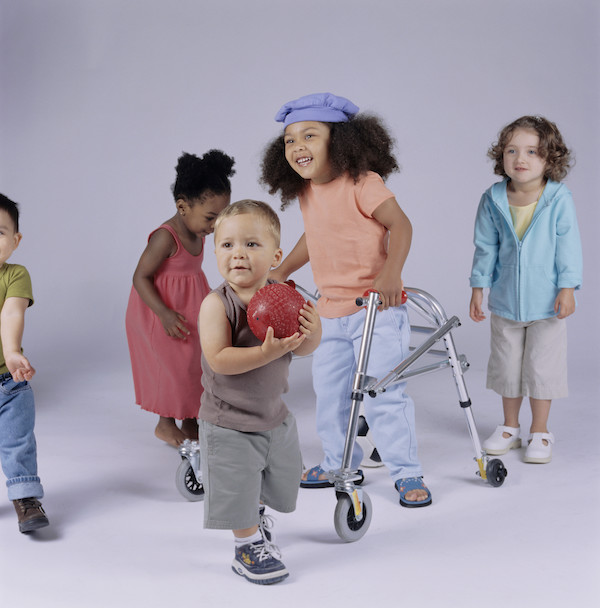 A disability can affect a child’s activities and ability to learn. Some children with disabilities need extra health services and support services.
A disability can affect a child’s activities and ability to learn. Some children with disabilities need extra health services and support services.
Children with disabilities are at higher risk for tooth decay and other oral health problems than children without disabilities.
This Brush Up on Oral Health tip sheet focuses on oral health challenges that some children with disabilities face and what Head Start staff and parents can do to address these challenges.
Oral Health Challenges for Children with Disabilities
- Children with physical disabilities, such as cerebral palsy, may not have the motor skills they need to use a toothbrush safely or to sit still in a dental chair during dental visits.
- Children with communication disorders, such as delayed speech and language development, may not be able to tell their parents or Head Start staff that they have a toothache.
- Children who get frequent medical care, such as having many medical visits or hospital stays, may be afraid of the dental office and may not cooperate during visits.
- Children who take medicines with added sugars or that cause dry mouth are at high risk for tooth decay. Sugar is added to some medicines to make them taste better. Other medicines used to treat cerebral palsy, seizures, and depression can cause dry mouth by lowering the amount of saliva in the mouth. Saliva plays an important role in preventing tooth decay. Medicines given to children with diseases or disorders, such as asthma or allergies, can also cause dry mouth.
- Children on special diets may be at high risk for tooth decay. Foods that are soft or high in starch (e.g., potatoes, corn) stick to children’s teeth and give bacteria in the mouth more time to cause tooth decay.
Strategies for Head Start Staff to Help Improve the Oral Health of Children with Disabilities

- Learn more about a child’s disability and its impact on oral health. The South Carolina Department of Health and Environmental Control, Office of Oral Health’s Oral Health for Families with Special Health Care Needs offers information on general topics that include taking care of teeth, selecting the right toothbrush, adapting toothbrushes, addressing challenges, providing good nutrition, encouraging safety, and going to the dentist. The guide is designed specifically for parents of children with special health care needs, for use in child care centers and community support organizations.
- Give children with disabilities extra support in the classroom. Make sure children eat food and drink beverages low in sugar and that children’s teeth are brushed with fluoridated toothpaste after meals. Children with intellectual disabilities may need extra time for brushing. These children may also benefit from changes to their toothbrushes or to the way they brush their teeth. Some children have a hard time explaining how they feel. Help them find ways to express discomfort they may have when brushing their teeth or having their teeth brushed.
- Help parents understand that their child’s disability may put the child at high risk for developing tooth decay. Share information that can help parents keep their child’s mouth healthy and get needed oral health care for their child. See Healthy Habits for Happy Smiles.
- Identify dentists in the community who provide care for children with disabilities. Recognize that parents may have a hard time finding a dentist willing to provide care for their child, and help parents find a dentist. Look for pediatric dentists who have special education and training on caring for children with disabilities.
- Work with parents to complete the form Getting to Know Me: Information for Your Child’s Dental Office. The form gathers information about the child’s ability to cooperate during dental visits. It also includes suggestions from parents or Head Start staff about approaches that might work best for the child. This information will help the dental office staff understand and meet the child’s needs.
Download a PDF version to print and share.
Read more:
Resource Type: Article
National Centers: Health, Behavioral Health, and Safety
Audience: Teachers and Caregivers
Series: Brush Up on Oral Health (BUOH)
Last Updated: April 26, 2023
